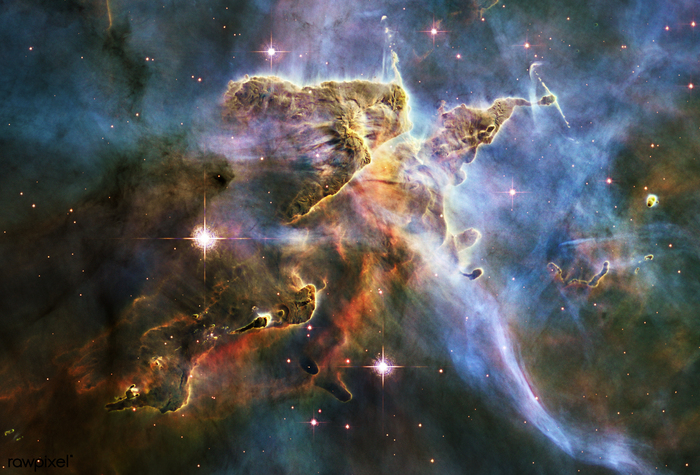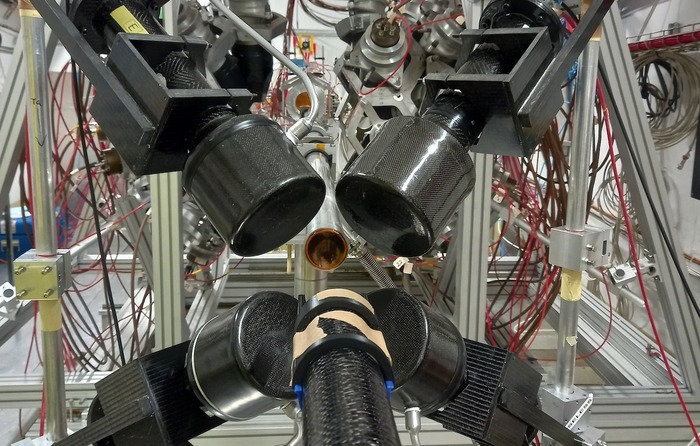Enlarge image
The data lives on: dismantling of the collider detector at the particle accelerator at the Fermilab test center near Chicago in 2013
Photo: Reidar Hahn / Fermilab
The world's physicists are in turmoil: the grand standard model they use to describe how the universe works may be revealing major flaws.
According to a new evaluation of measurement data from an old experiment, an important particle called the W boson is heavier than previously measured - and in fact above the error margin of the standard model, which is otherwise almost always exactly reliable.
The analysis was published Thursday by a 398-strong team in the journal Science.
"There's not just anything wrong," said particle physicist Dave Toback of Texas A&M University and spokesman for the US state-owned Fermi National Accelerator Lab (Fermilab) near Chicago, where the experiments took place.
The Tevatron particle accelerator there was shut down in 2011 and replaced by the more powerful LHC particle accelerator at the European Nuclear Research Center Cern in Geneva.
However, the evaluation of the data continued until today.
If the new results were confirmed in other experiments, "it literally means something fundamental is wrong with our understanding of nature," Toback said.
The scientists were looking for precisely such explanatory gaps.
Because it has long been clear that the standard model cannot be the last word.
So far, it has explained almost perfectly everything that can be measured that is happening in the universe.
However, it does not provide an explanation for the immeasurable dark matter that makes up most of the universe.
In addition, according to the model, matter and antimatter would have to face each other symmetrically, while in reality matter predominates.
With complete symmetry, the universe could not have come into existence in the first place because the antimatter would have dissolved the matter.
Gravity also raises questions about the model.
W boson carries the weak nuclear force
The last missing piece of the model was only added in 2012, when experiments at the Cern accelerator LHC led to the discovery of the Higgs boson.
Ironically, the facility superseded by the LHC could now help overhaul the model bolstered with these findings.
In the Tevatron, the researchers crashed particles into each other for more than ten years and then measured the weight of four million W bosons.
These particles, smaller than atoms, are responsible for the so-called weak nuclear force - one of the fundamental forces in physics - and only exist for a fraction of a second before breaking up into other particles.
"They pop in and out of the quantum foam of the universe all the time," Toback said.
According to the study, the difference from the Standard Model's predictions was too large to be dismissed as rounding errors or other explanations.
The result was so extraordinary that it had to be confirmed by another experiment.
Instead of 80.357 billion electron volts with an error margin of plus or minus six, the Fermi team came up with 80.433 billion electron volts per W boson, plus or minus nine, according to the Italian nuclear physicist Giorgio Chiarelli.
Like a hidden room in your own house
It's like finding a hidden room in your own home, explained Duke University physicist Ashutosh V. Kotwal, who led the analysis project.
The same experiment had already shown slightly increased values for the W boson in 2012, but only part of the data was evaluated.
The analysis of another experiment at CERN in 2014, on the other hand, provided values that matched the standard model.
The researchers speculated that an undiscovered particle could interact with the W boson and explain the deviation.
Dark matter may play a role.
Or there are still unknown physical forces at work.
Non-Fermi theoretical physicist Doreen Wackeroth of the University at Buffalo told Science that she was "very excited about the result."
The particle physicist Claudio Campagnari from the University of California Santa Barbara also praised the "incredibly fine measurement".
He takes the result very seriously.
However, confirmation by further experiments is required.
A team at the LHC hopes to be able to present such results as early as next year.
The experimental physicist Martin Grünewald from University College Dublin was more skeptical.
"All these measurements purport to measure the same quantity," he said.
"Someone must be, I don't want to say wrong, but maybe they made a mistake or they did the error evaluation too aggressively."
A year ago, another team at Fermilab found another problem in the Standard Model: particles called muons were a little more magnetic than predicted.
Such results do not provide a new model to explain the universe - but at least indications in which direction the explanation should go.
ak/AP









